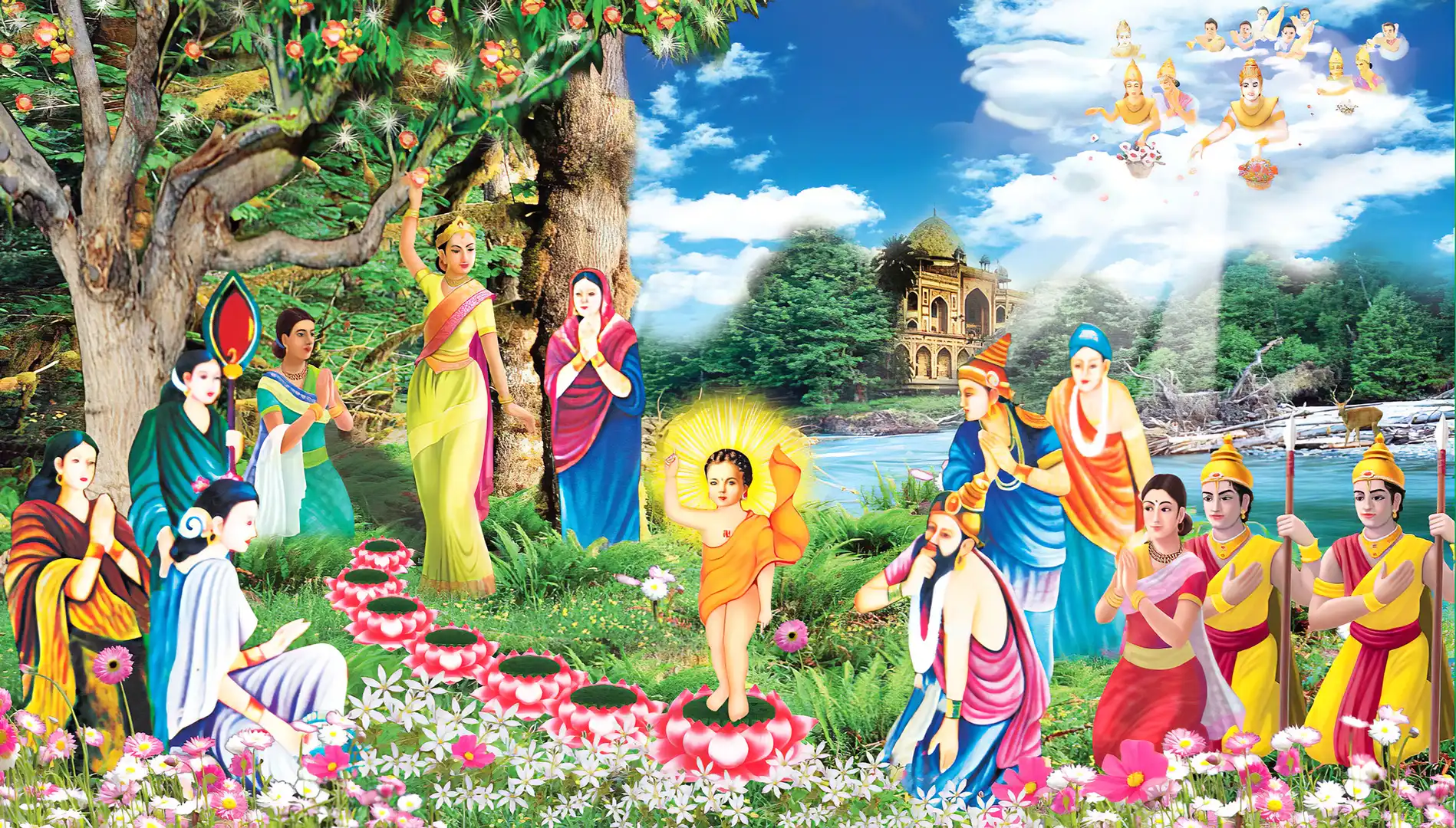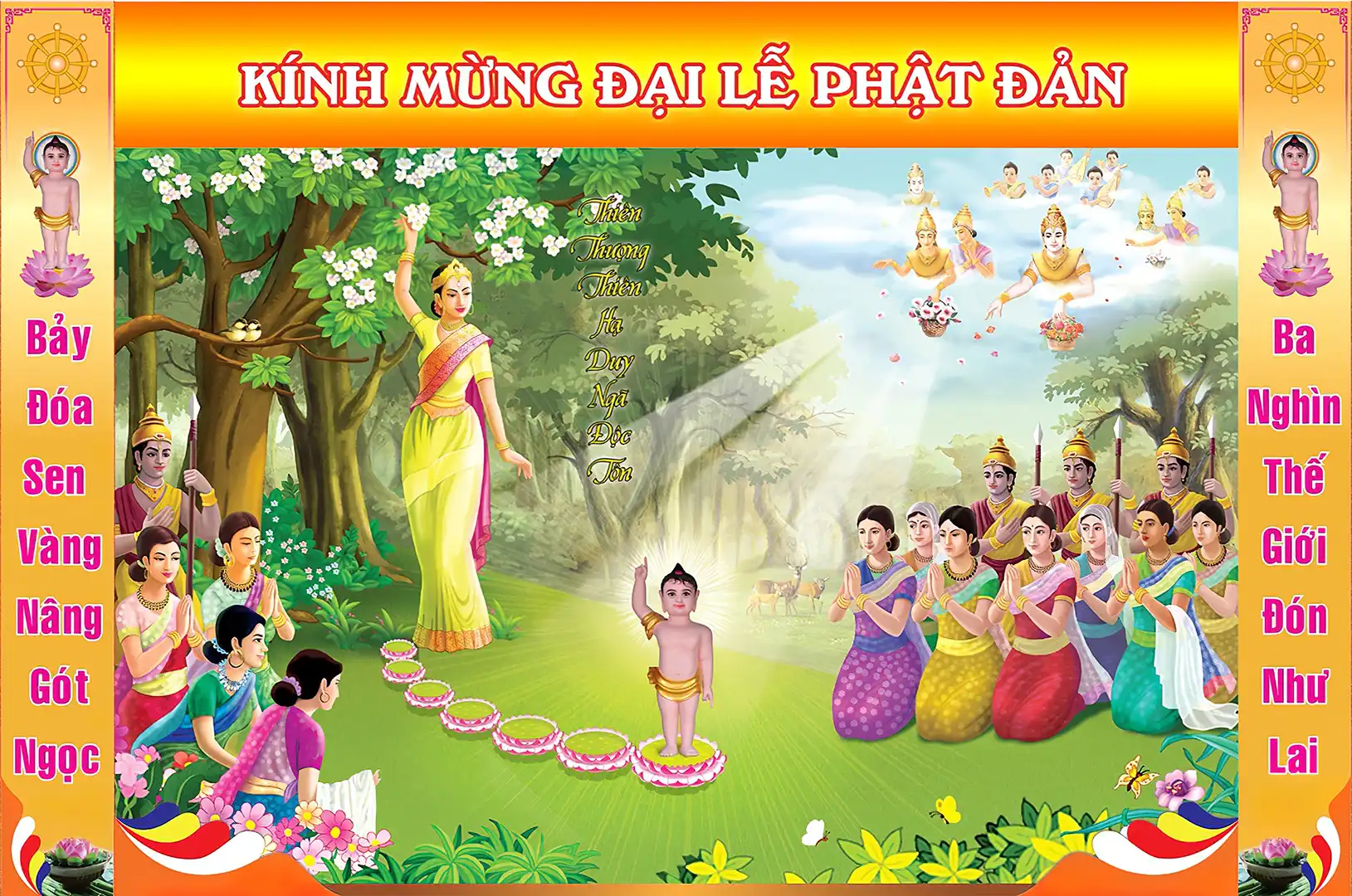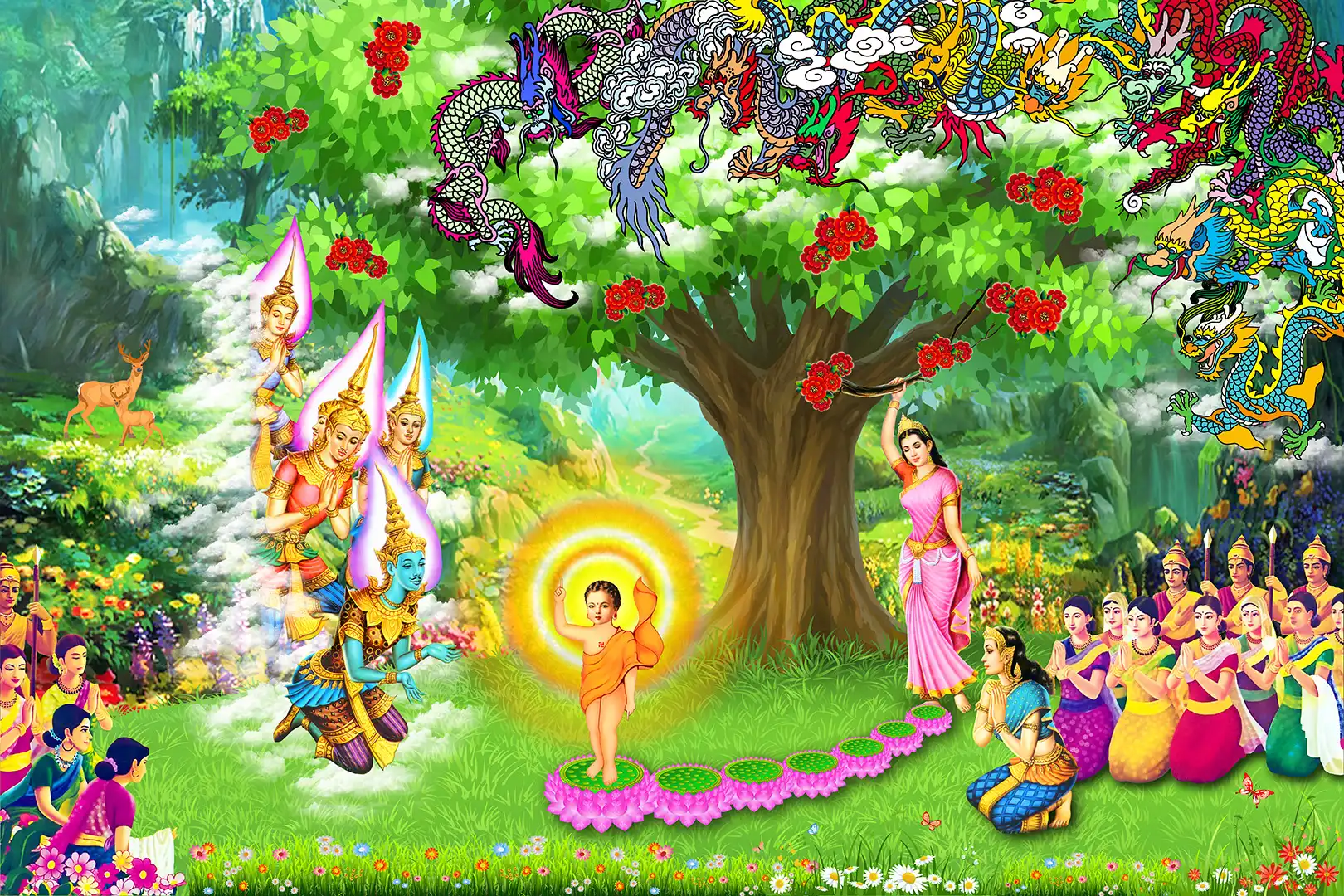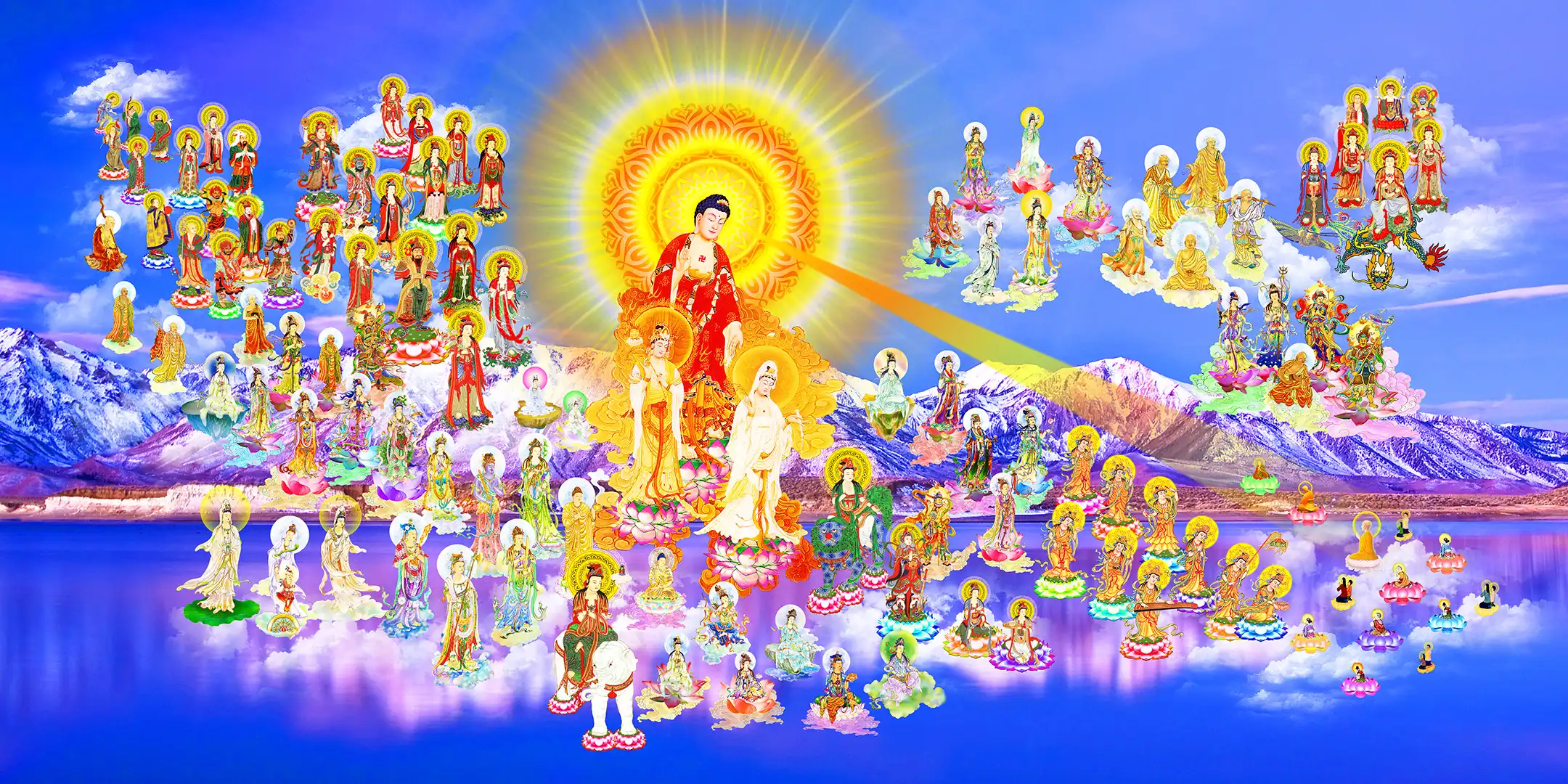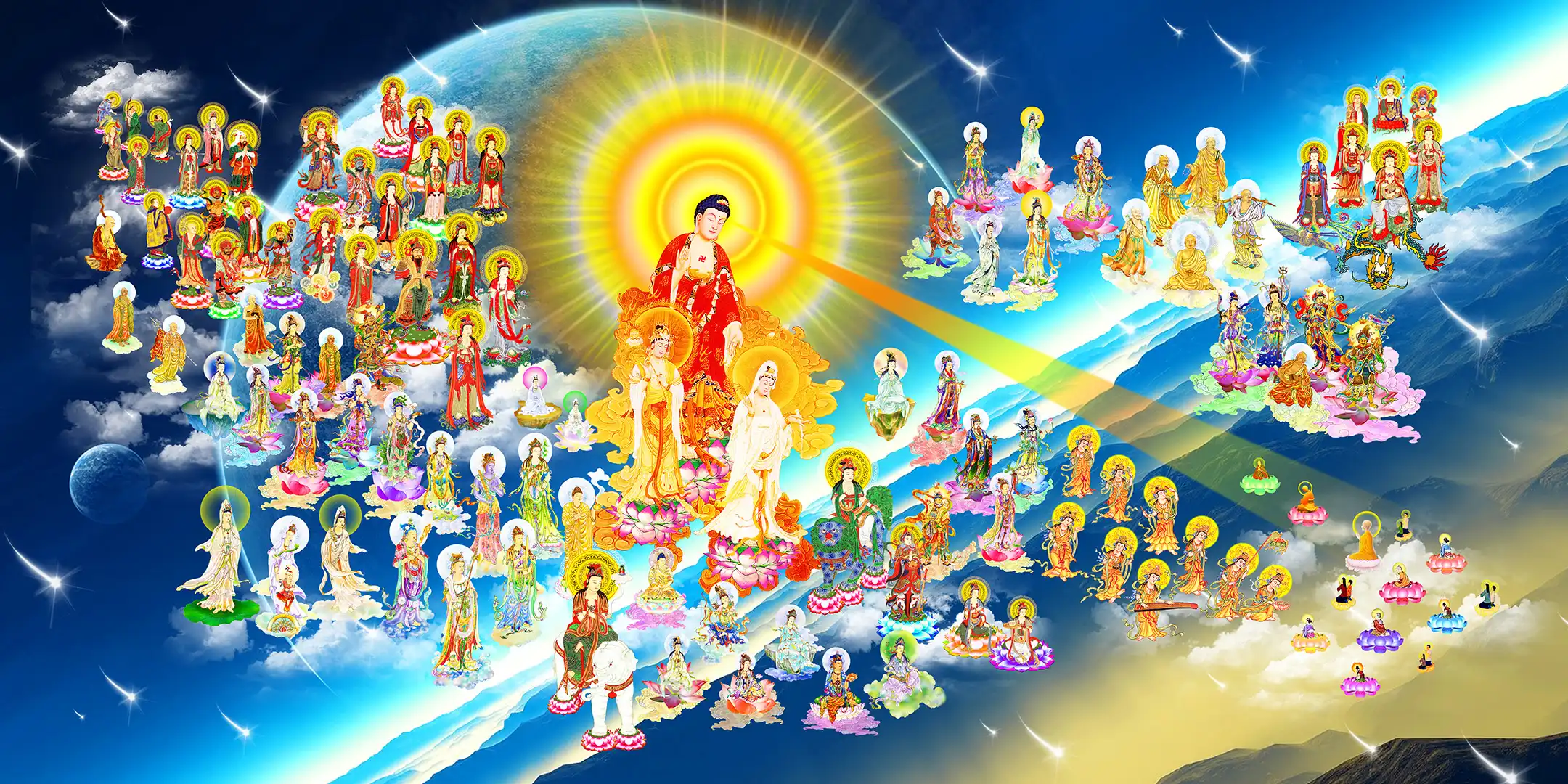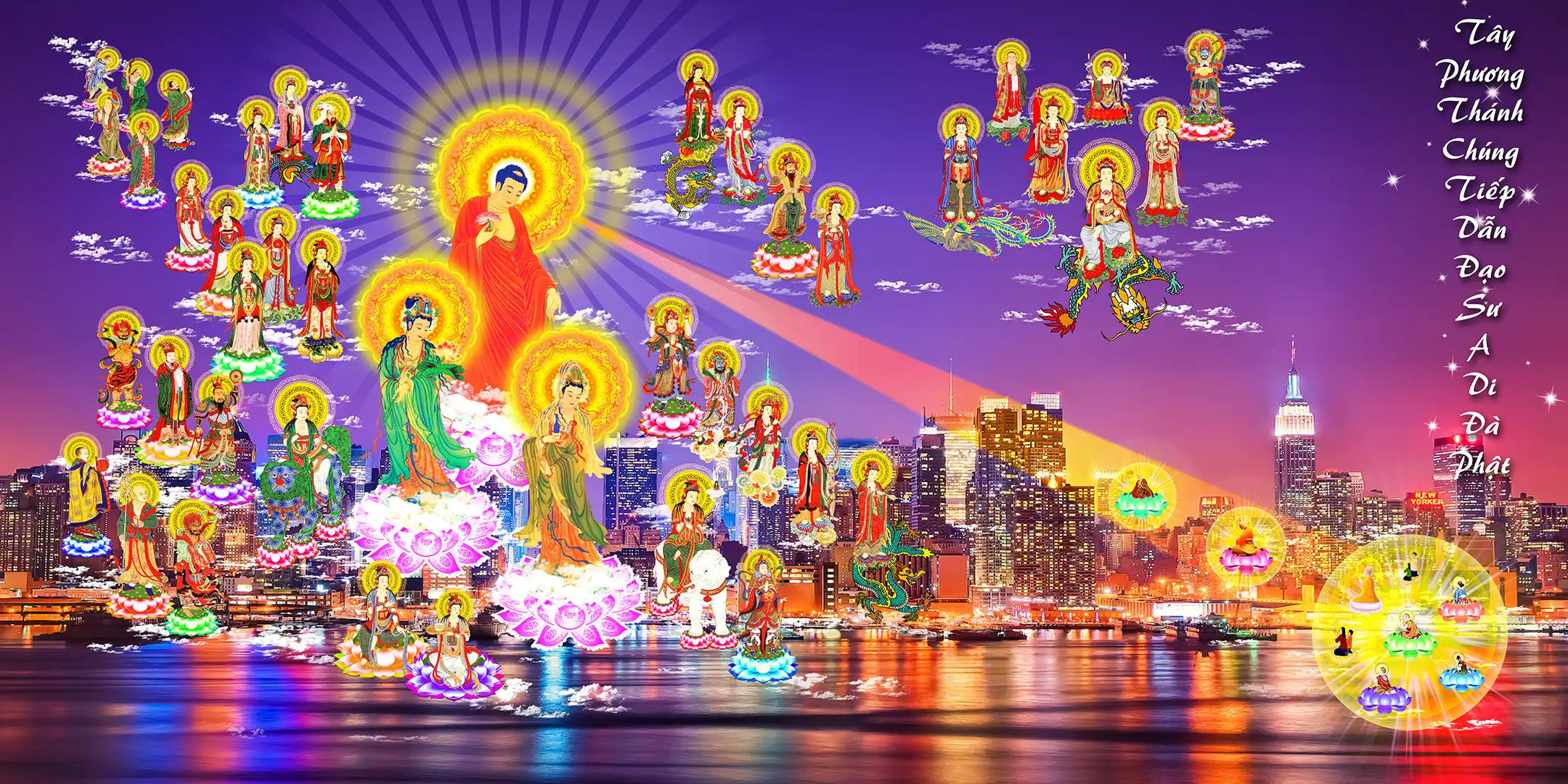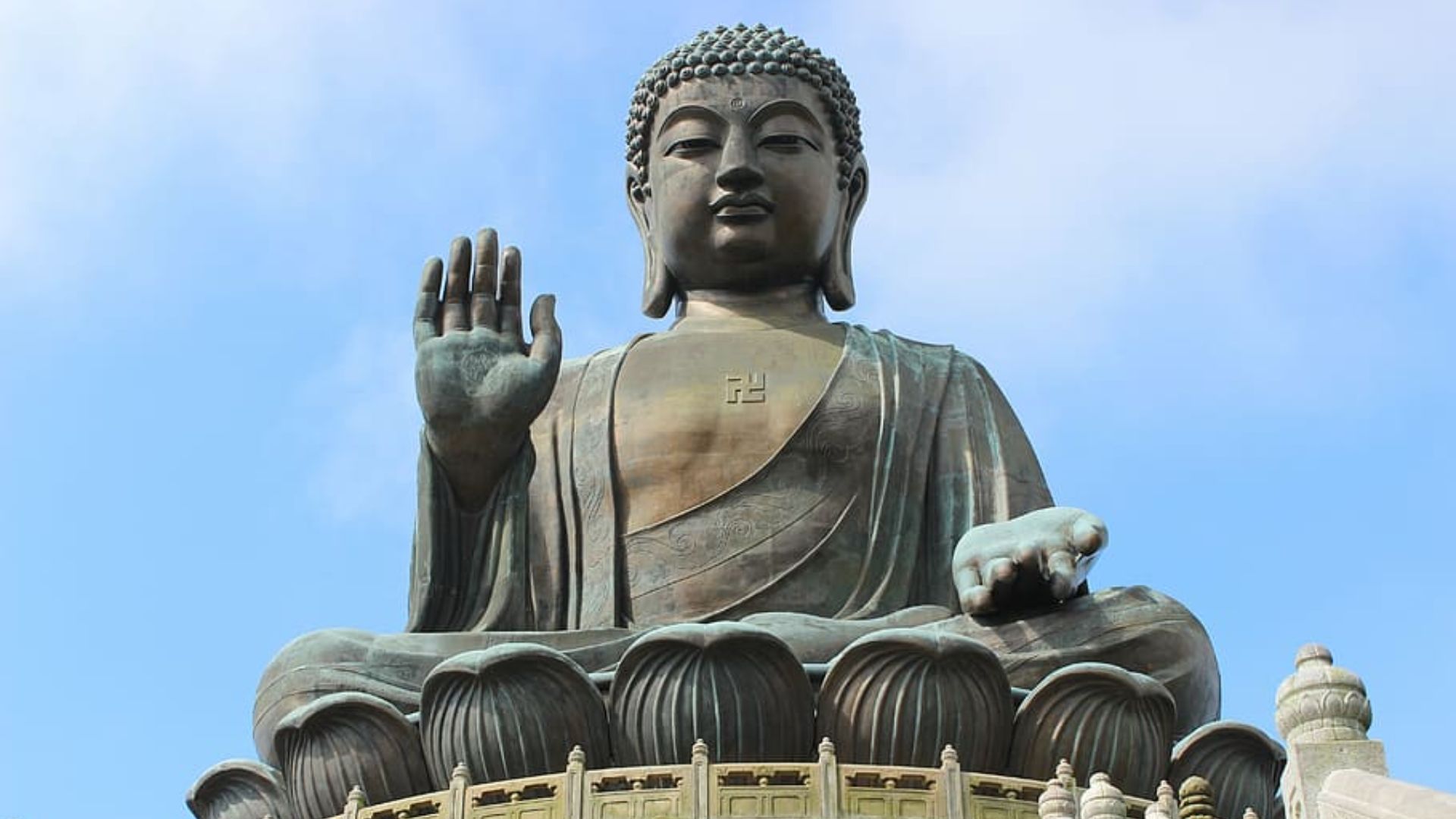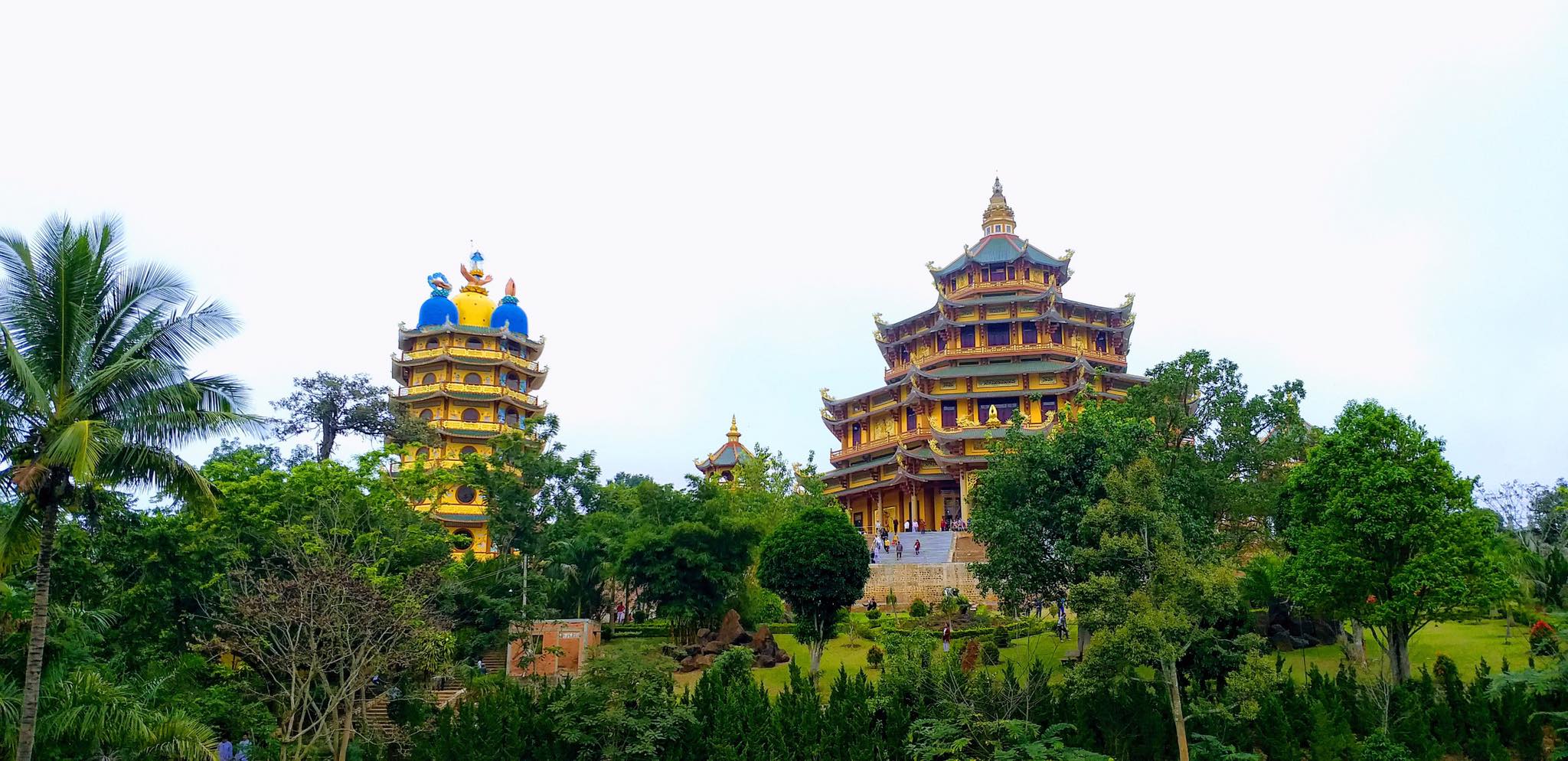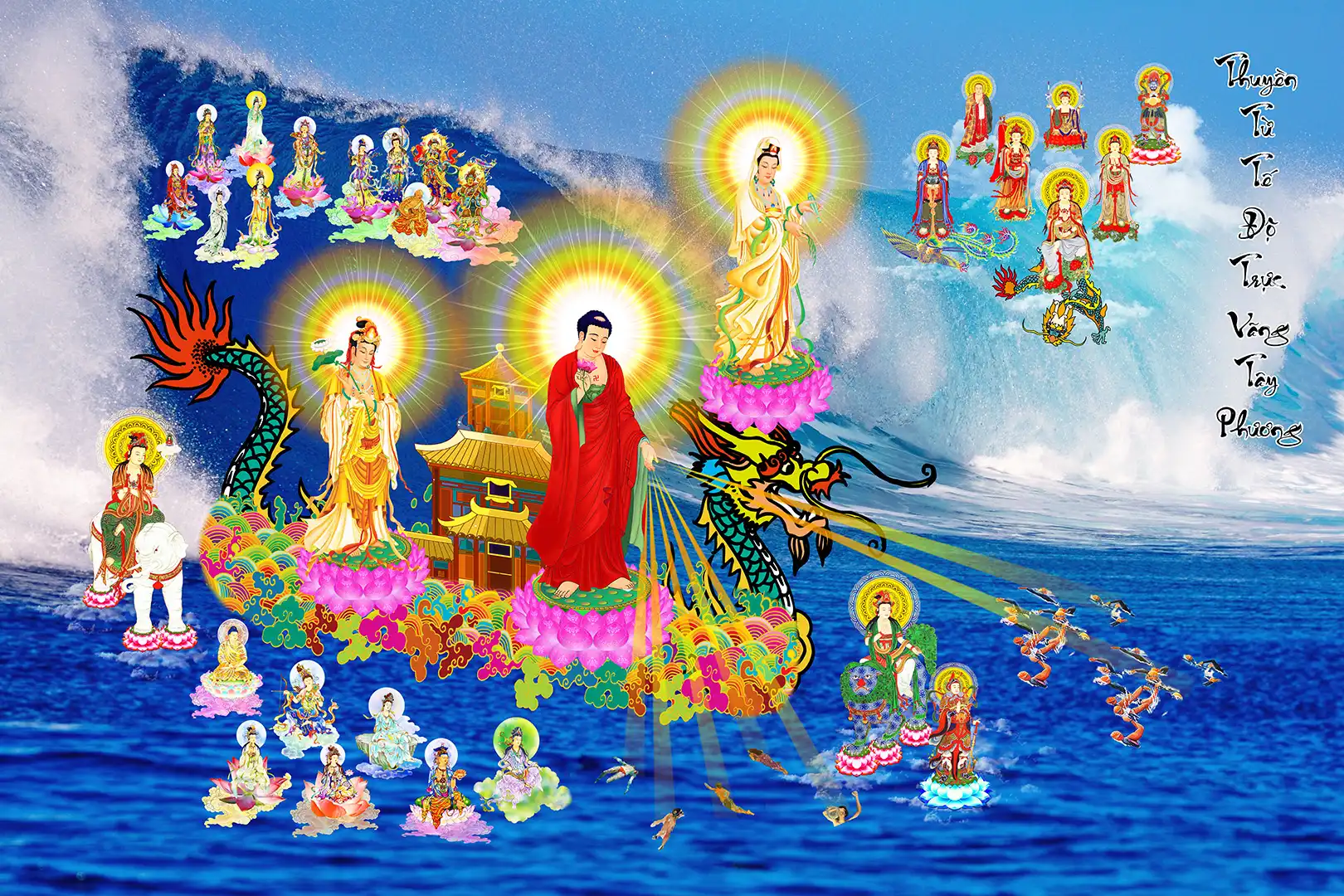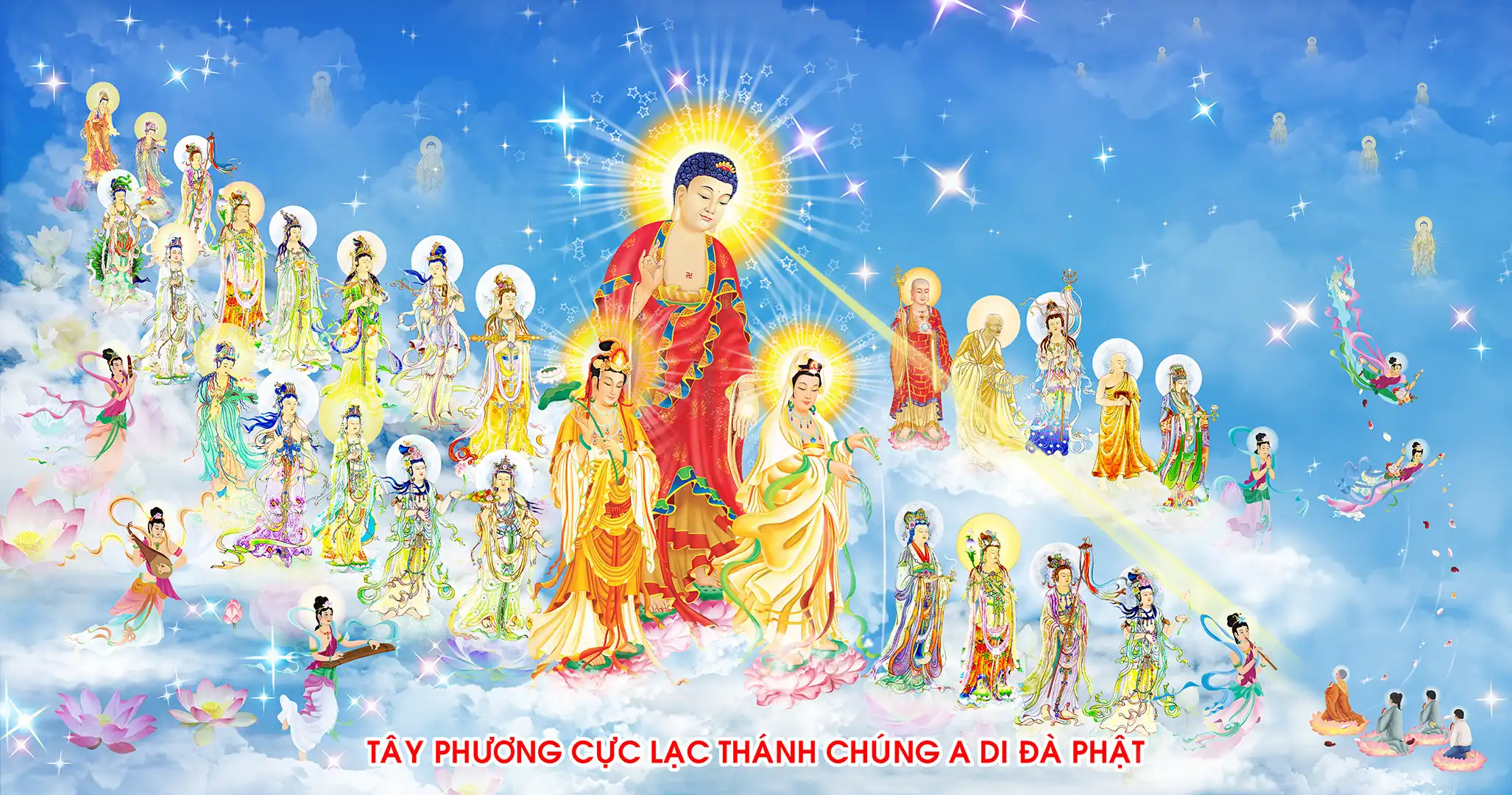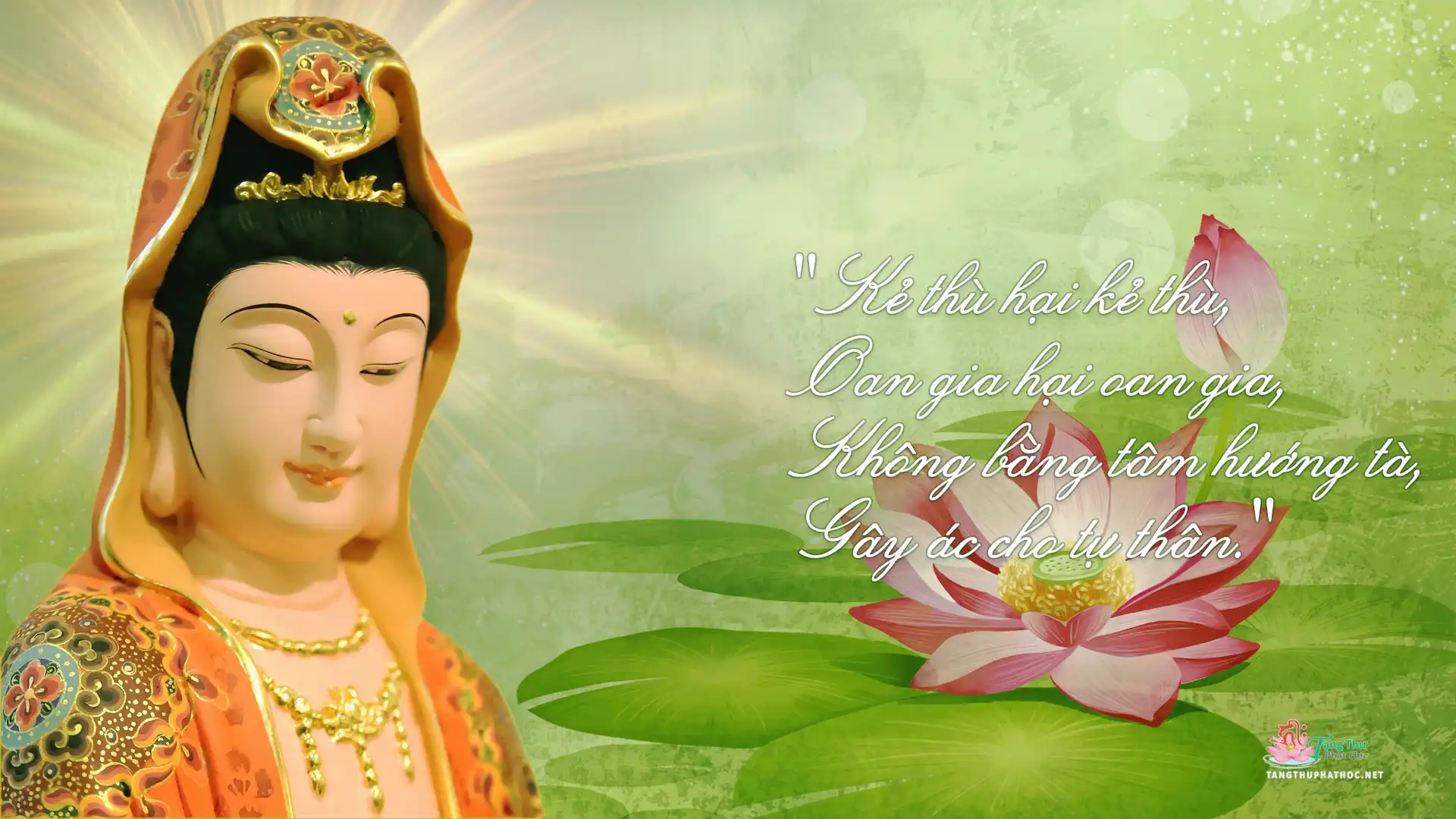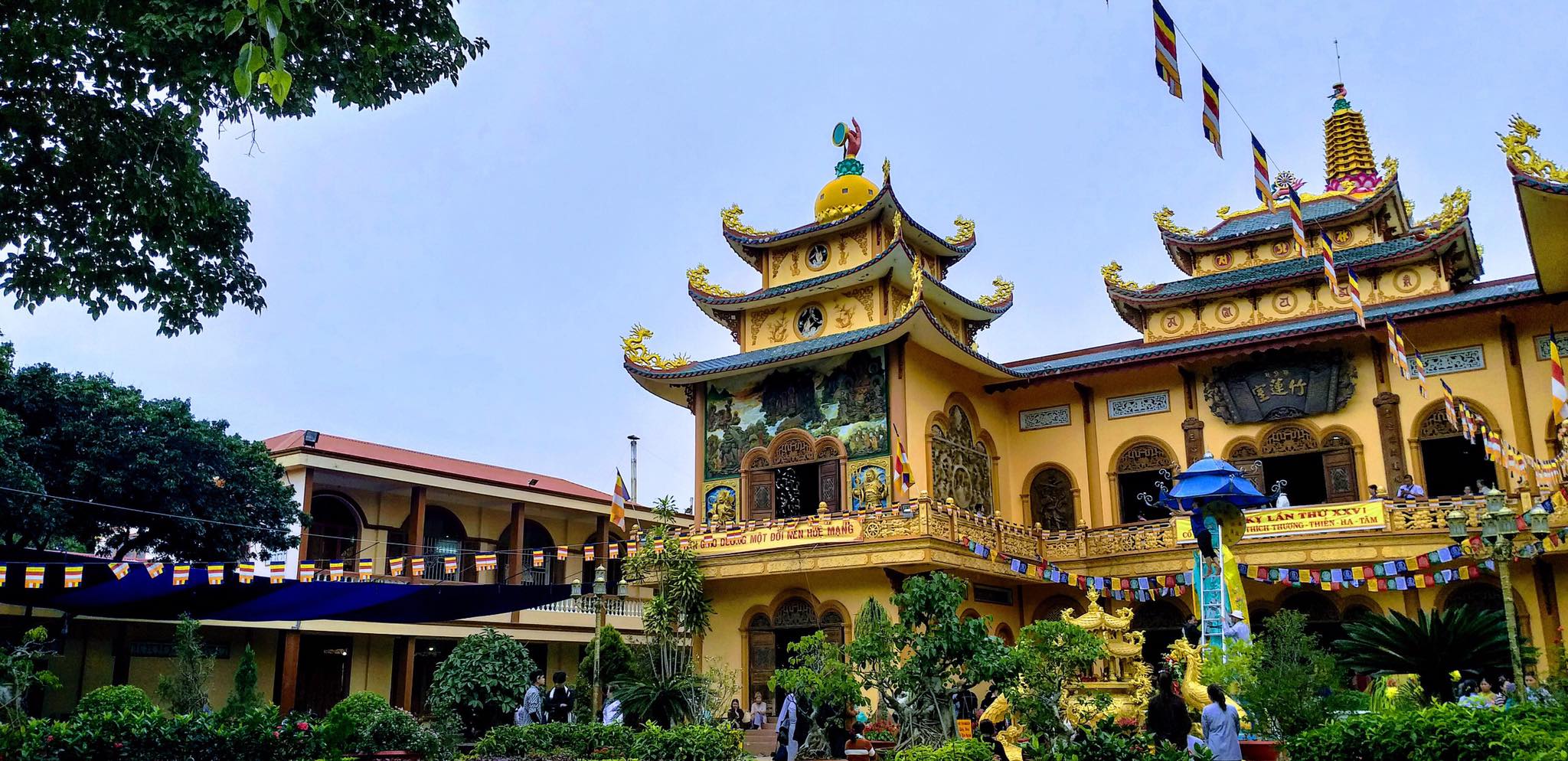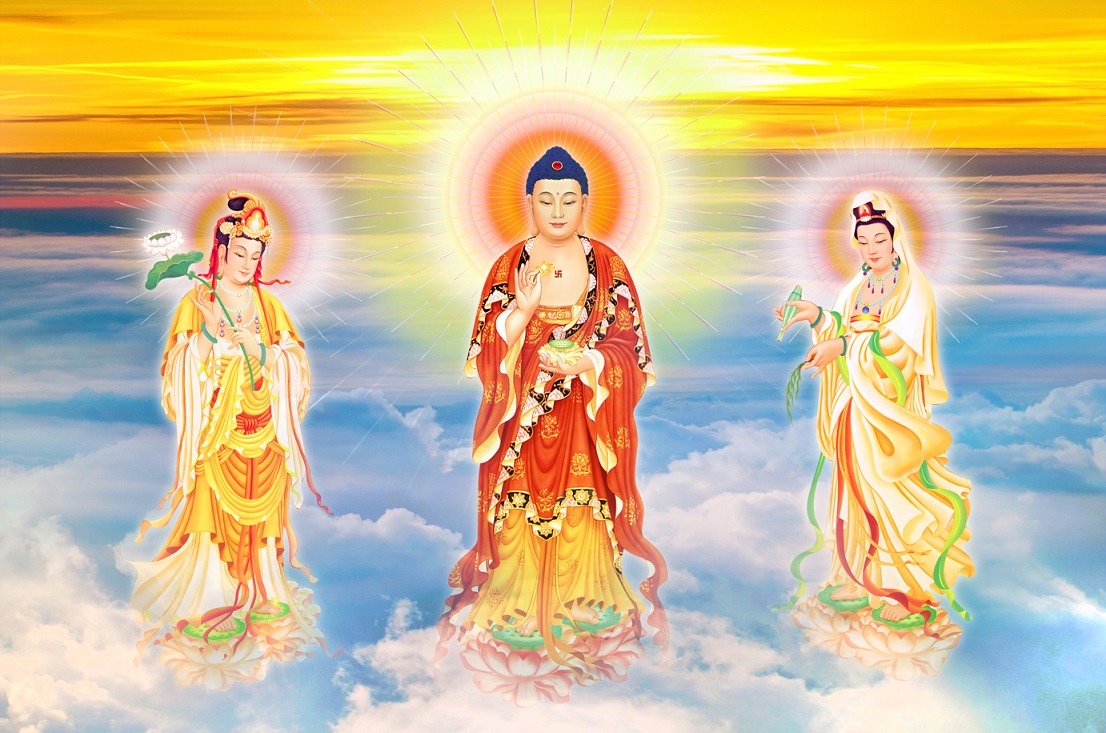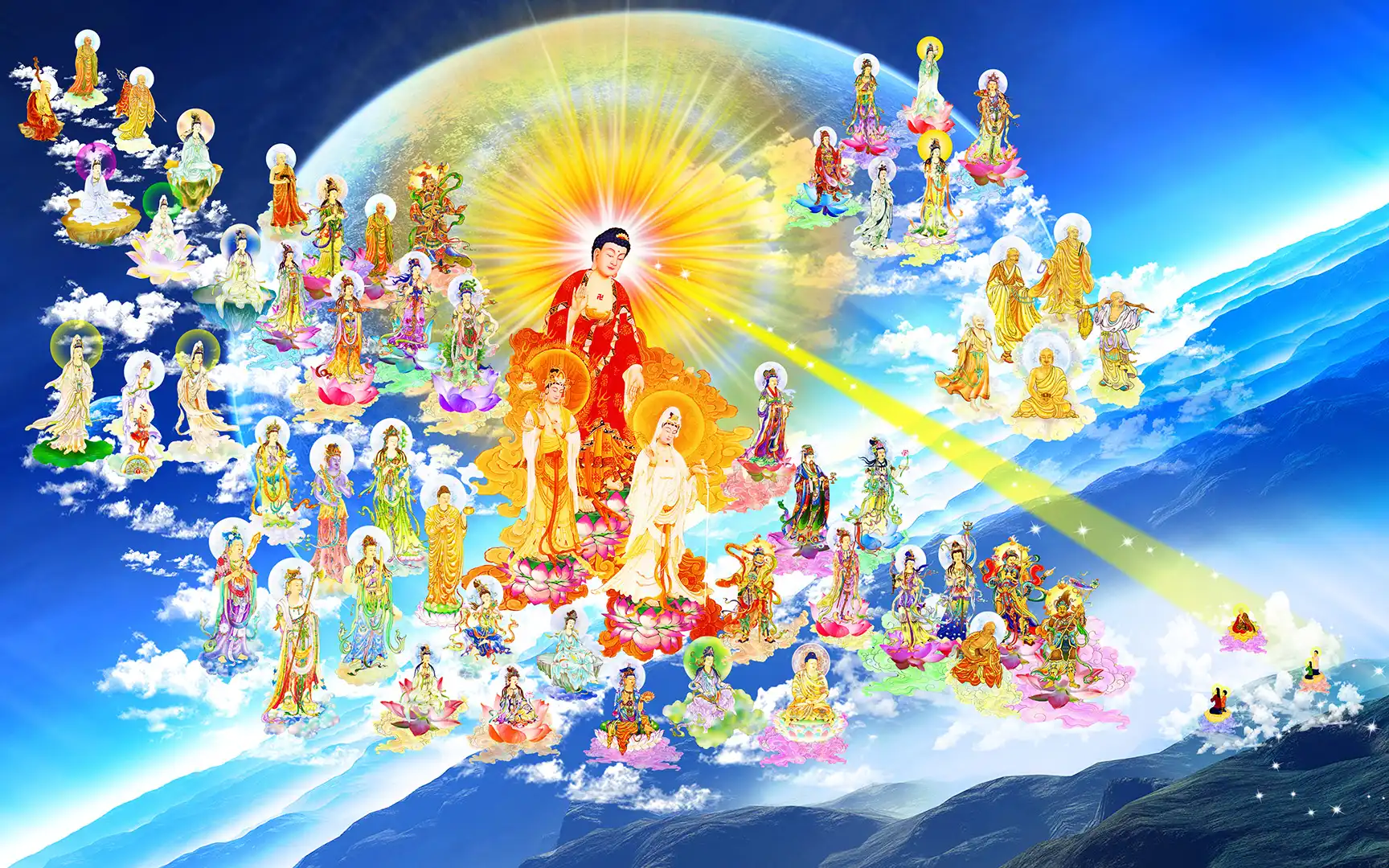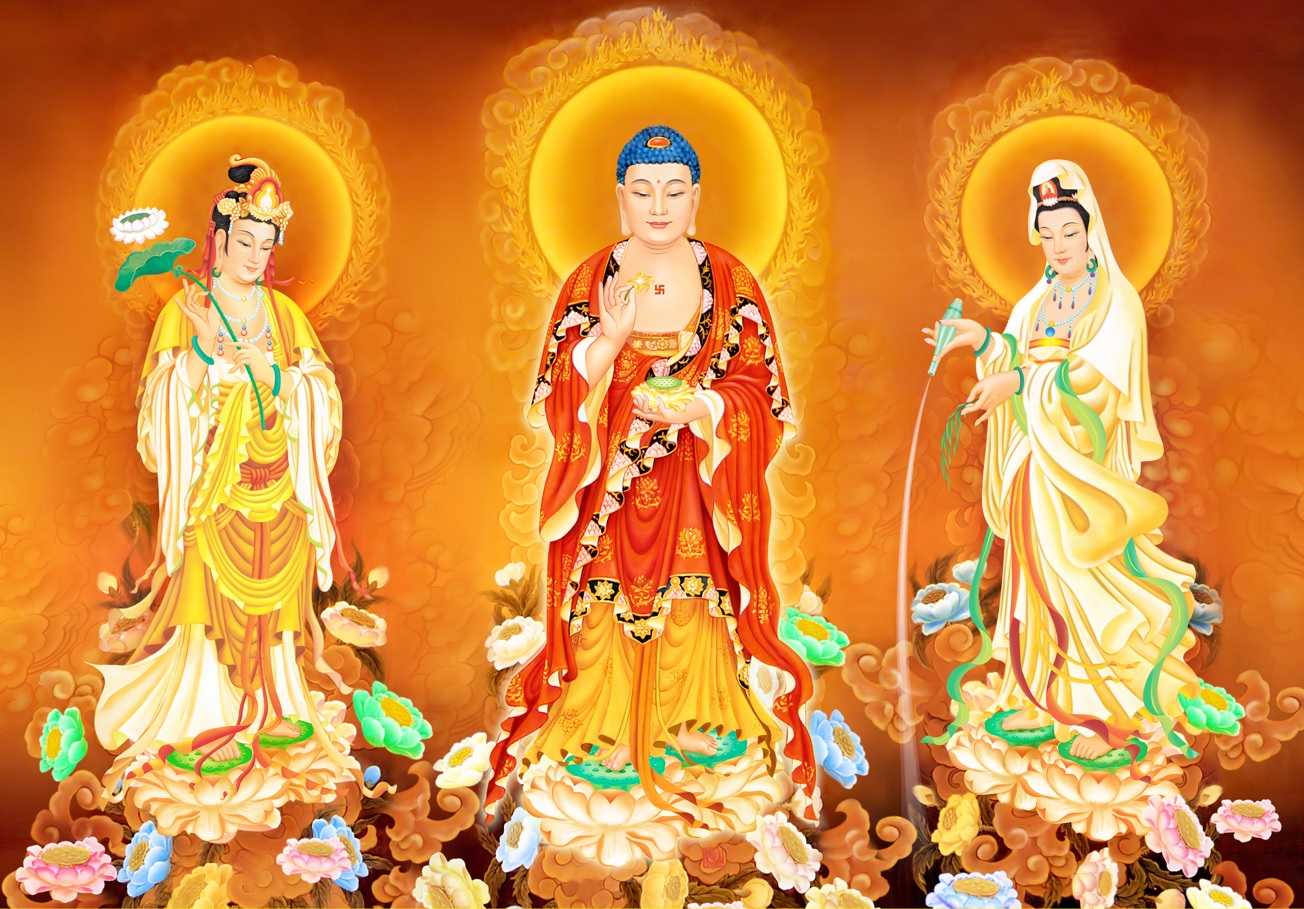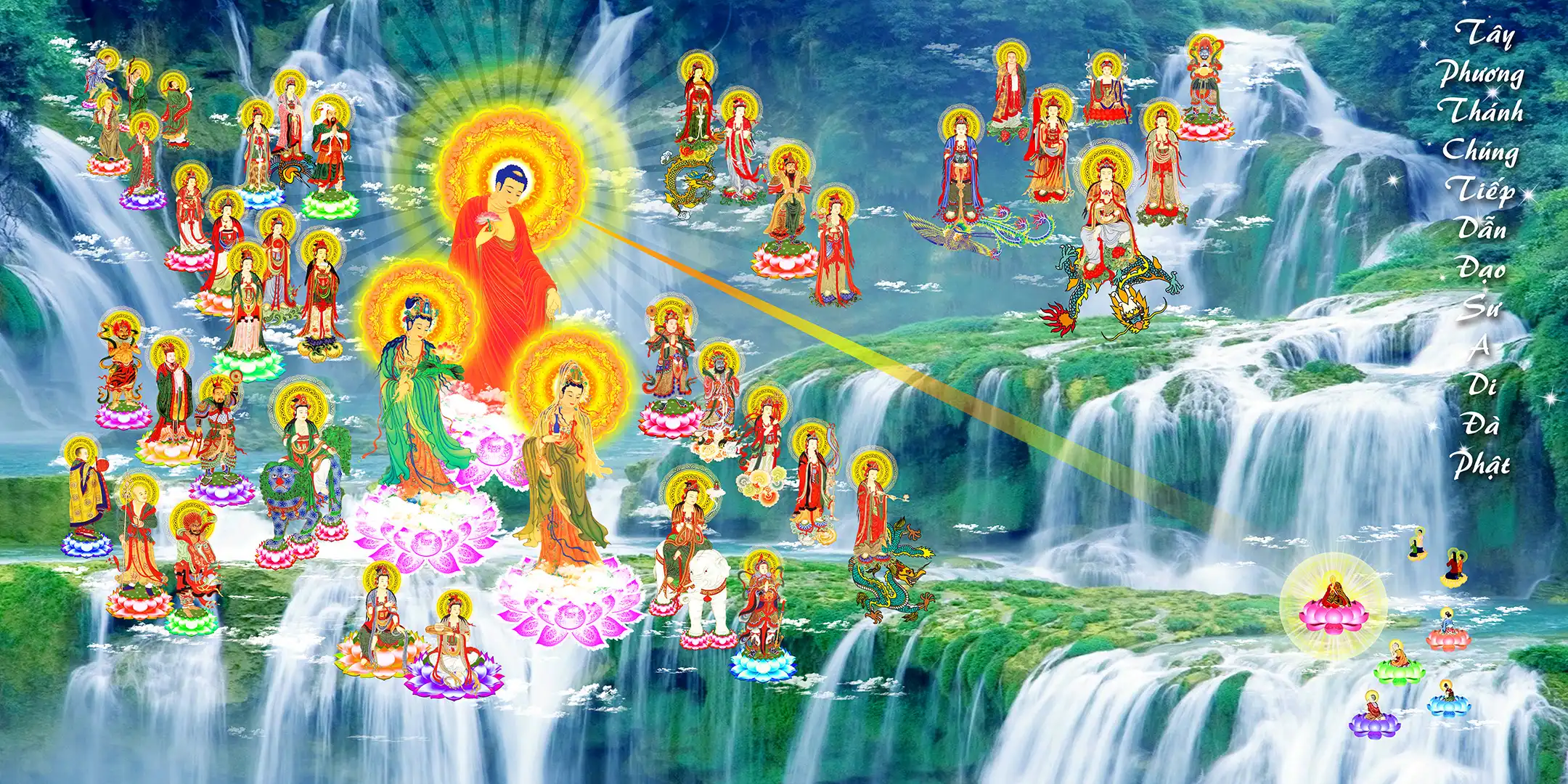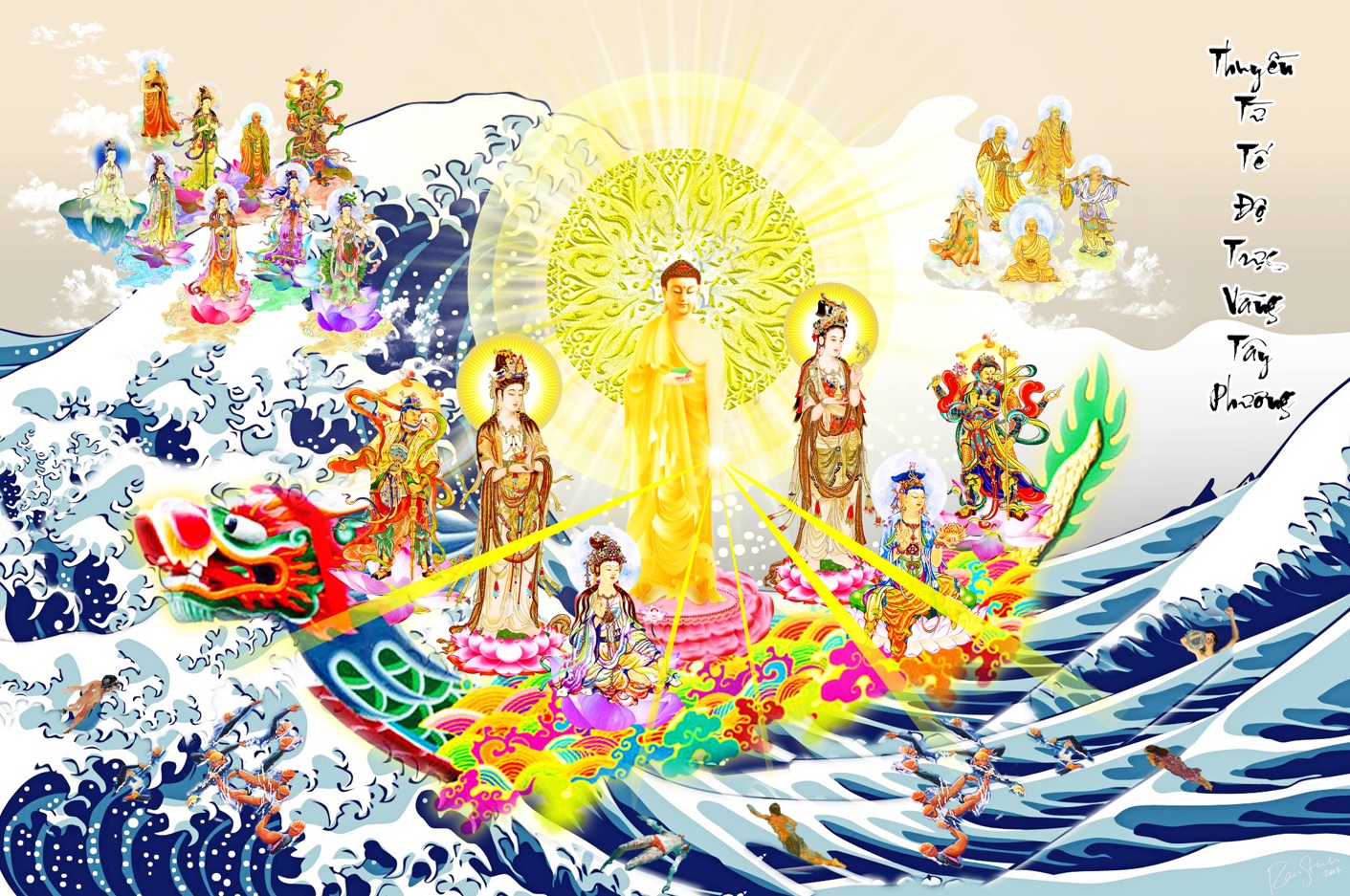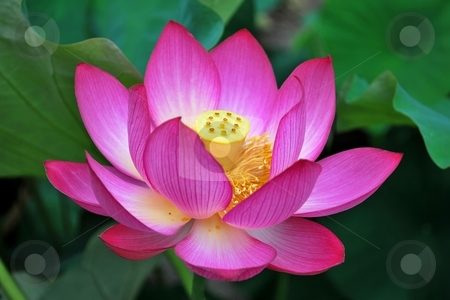THE SIXTH PATRIARCH’S DHARMA JEWEL PLATFORM SUTRA
A Commentary by the Venerable Master Hsuan Hua
A General Introduction

Edited by Bhikshu Fa Hai of the T’ang Dynasty
What follows is not the Sutra text, but an introduction to the Sutra which was written by The Sixth Patriarch’s disciple, Fa Hai. When the Sixth Patriarch taught Dharma, Master Fa Hai followed him, recording all of the things the Patriarch said. Later, he compiled and edited his notes, calling them The Sixth Patriarch’s Dharma Jewel Platform Sutra. Had he not done this, we would have no way to study the Sixth Patriarch’s Dharma. Therefore, we should certainly be grateful for such compassion as his.
Dharma Master Fa Hai’s lay name was Chang, and his common name was Wen Yün. He was a native of Ch’ü Chiang, which is about ten miles from Nan Hua monastery. He was a “room-entering disciple,” that is, a disciple to whom the Master had transmitted the Dharma. Though his introduction is not part of the Sutra proper, I will explain it to you, because it narrates some important events in the life of the Great Master.
Text:
The Great Master was named Hui Neng. His father was of the Lu family and had the personal name Hsing T’ao. His mother was of the Li family. The Master was born on the eighth day of the second month of the year Wu Hsü, in the twelfth year of the Chen Kuan Reign of the T’ang Dynasty (A.D. 638).
At that time, a beam of light ascended into space and a strange fragrance filled the room. At dawn, two strange Bhikshus came to visit. They addressed the Master’s father saying, “Last night a son was born to you and we have come to name him. It can be Hui above and below, Neng.”
The Father said, “Why shall he be called Hui Neng?”
The Monk said, “‘Hui’ means he will bestow the Dharma upon living beings. ‘Neng’ means he will be able to do the Buddha’s work.” Having said this, they left. No one knows where they went.
The Master did not drink milk. At night, spirits appeared and poured sweet dew over him.
Commentary:
The Great Master refers to the Sixth Patriarch, Hui Neng. The Master’s merit and virtue was great, he had great wisdom and compassion and so was a master of gods and humans.
When one is alive, one has a personal name. After one dies, that name is avoided. Hence it is called a personal name, a name which is not spoken.
When the Great Master’s mother gave birth to him, a fine beam of light arose, like that which the Buddha emits from his forehead. A strange, fragrant incense which had never been smelled before filled the room.
At dawn, the heavens are half dark and half light. Chü Hsi in “The Song of Household Affairs” wrote:
At dawn, get up;
Sprinkle and sweep the hall.
The inside, the outside,
You must clean it all.
In China at that time there was no linoleum. In the morning, people sprinkled water on the mud floors, waited a bit, and then swept their houses clean inside and out.
The two strange Bhikshus were quite different from ordinary people. They were like the Fourth Patriarch who, by merely opening his eyes, caused everyone to tremble in fright. These two unusual Bhikshus came to name the Sixth Patriarch. Isn’t this strange? Who has two Bhikshus come to name him?
To say “above” and “below” when referring to a person’s name, is a most respectful form of address.
What the newly born Patriarch ate was sweet dew.
Text:
He grew up, and at the age of twenty-four he heard the Sutra and awoke to the Way. He went to Huang Mei to seek the seal of approval.
Commentary:
Some say that the Sixth Patriarch was twenty-four, others say that he was twenty-two. As the Chinese count he was twentyfour and as Westerners count, he was twenty-two. Whether he was twenty-two or twenty-four is not really important.
When the Sixth Patriarch heard the layman recite The Diamond Sutra and reach the line, “One should produce that thought which is nowhere supported,” the Sixth Patriarch said, “Oh! Not supported anywhere!” He was immediately enlightened.
A great many people had heard The Diamond Sutra, but none of them had become enlightened. Now in the West, perhaps someone will hear, “One should produce that thought which is nowhere supported” and, understanding the principle, become enlightened. That is what I hope. Whether or not it will actually happen is another matter.
After becoming enlightened, he did not say, “Hah! I am enlightened.” He was not like some people today who do not understand even a hair’s breadth of the Buddhadharma, yet claim to be enlightened.
The ancients, even when they had become enlightened, did not recklessly say, “I am enlightened!” Even less would people who had not become enlightened claim to have done so. It is necessary to seek certification from a good knowing advisor, a person who has already awakened. That is why the Sixth Patriarch went to Huang Mei to seek the Fifth Patriarch’s seal of certification.
Enlightened ancients did not attempt to certify themselves. Today, however, there are those who have not become enlightened and yet say that they have. Enlightenment and nonenlightenment are as different as heaven and earth.
Moreover, many naive young people take stupefying drugs and claim to have “gone to the void.” Confused demons, posing as good knowing advisors, certify them saying, “Yes, you have attained to emptiness. However, there is no place for you to live in emptiness. Come Back. Come to my place. I have buildings and houses; I have a commune!”
The young people say, “That’s not bad at all!” They take the demons as their teachers. Ultimately these “bad knowing advisors” do not know themselves if they are true or false. You and I do not know either.
But now we should use the Sutras for certification. The Sutras do not say that any foolish person has a commune in empty space. Even though rockets now go to the moon, space settlements have not yet been built. So this kind of talk simply does not get by.
Now we are exceedingly busy. In the morning, everyone gets up at four o’clock to recite Sutras. We are busy building houses on the Earth, not in heaven. Why? We are people on earth and so our houses should be built on the earth. We are forging our bodies into indestructible vajra bodies. Our bodies are our houses, but they sometimes go bad. Now, from morning to night, we are busy constructing them, cultivating them to be in the end like indestructible vajra bodies.
With an indestructible vajra body you can go wherever you wish. You can go into empty space, up to the heavens, down into the earth, or to the dragon king’s palace. It is very simple and you do not need a passport or a schedule. You are free to take off at your convenience. But first construct your indestructible body. Then you can do it.
Text:
The Fifth Patriarch measured his capacity and transmitted the robe and Dharma so that he inherited the Patriarchate. The time was the first year of the reign period Lung Shuo, cyclical year Hsin Yu (A.D. 661).
He returned south and hid for sixteen years.
Commentary:
After the Sixth Patriarch left Huang Mei, he had no safe place to live. Because Shen Hsiu’s disciples and followers of nonThe Buddhist religions wished to harm him, the Great Master went to live with hunters for sixteen years.
During this time no one knew that he was the Sixth Patriarch. He worked hard practicing Dhyana meditation while watching over the animals and birds the hunters had caught and secretly releasing the ones which had been only slightly injured and could still travel safely. He had much time to cultivate and perfect his skill, for no one came to trouble him.
If you do not truly cultivate, everything is easy, but if you do cultivate truly, demon-obstacles arise from the four corners and the eight directions. Unexpected circumstances prevail and things you never dreamed could happen do happen.
In his sixteen years with the hunters, the Sixth Patriarch dwelt without disturbance, living just as they did. That is genuine hiding. He did not seek fame or profit and he did not try to take advantage of circumstances. He practiced genuine cultivation.
Text:
On the eighth day of the first month in the first year of the reign period I Feng (A.D. 676), the cyclical year Ping Tsu, he met Dharma Master Yin Tsung. Together they discussed the profound and mysterious, and Yin Tsung became awakened to and united with the Master’s doctrine.
Commentary:
They talked back and forth, querying each other on principle. Who asked whom? Dharma Master Yin Tsung asked the Great Master, the Sixth Patriarch. The Great Master had solved the dispute over whether the flag or the wind moved, by explaining that it was the mind that moved, and Dharma Master Yin Tsung had been astounded to hear a layman speak in such a deep and wonderful way. He got down from his Dharma seat and escorted the Sixth Patriarch to his room for a chat.
“Where did you come from and what is your name?” he asked. Dharma Master Yin Tsung knew that this layman was a room-entering disciple of the Fifth Patriarch, one to whom the Fifth Patriarch had transmitted the Dharma. He immediately bowed to the Great Master. They then investigated the profound and mysterious; they talked about the wind and the flag. Until his talk with the Sixth Patriarch, Dharma Master Yin Tsung had not correctly understood the principle of the Dhyana School.
Text:
On the fifteenth day of that month, at a meeting of all the four assemblies, the Master’s head was shaved. On the eighth day of the second month, all those of wellknown virtue gathered together to administer the complete precepts. Vinaya Master Chih Kuang of Hsi Ching was the Precept Transmitter.
Commentary:
During the week of the eighth to the fifteenth day of the first month, Dharma Master Yin Tsung gathered the four assemblies together: the Bhikshus, Bhikshunis, Upasakas, and Upasikas. The purpose of the meeting was to shave the Master’s head so that he could leave home and become a Bhikshu.
People leave home for various reasons. Some find it difficult to obtain food and clothing. They see that those who have left home are well provided for, and so they leave home so they can eat and be clothed. Others leave home because they are old and have no children. They think, “I will leave home and take a young disciple who will care for me as a son would.” It is uncertain whether people who leave home for these reasons can really cultivate.
Some leave home because they are bandits or runaways. They leave home and cut off their hair so that the government won’t find them and cut off their heads! Some leave home when small, but it is not certain whether they can cultivate.
Some people have “confused beliefs.” Even so, they still believe, and that is good. For instance, the parents of a sick child may say, “The child may die of disease. We should give him to a temple and he can become a Bhikshu and we can go visit him. That is better than letting him die!” So out of confused belief, the parents give their child to the temple.
People of confused belief may not necessarily be bad, but people who “believe in confused principles” are definitely not good. They have faith, but it is misplaced. That is confusion within confusion and it is not good.
Some are “confused and without belief.” In their confusion they do not believe in anything. Finally there are the “believing and unconfused.” These people study the Buddhadharma with a faithful heart until they are no longer confused.
Of these last four types of people who have left home, one cannot say that any of them will be able to cultivate, nor can one say for sure that they cannot. Perhaps only one or two per cent can cultivate the Dharma. However, if you resolve to attain enlightenment in order to end birth and death, you can surely cultivate upon leaving home.
Again, there are those who no longer have a family and so leave their worldly homes.
Some leave the home of the three realms: the realm of desire, the realm of form, and the realm of formlessness. Once out of Ithese three realms there are no desires, no forms, and no formless consciousness. Because of their non-attachment, these people see the three realms as empty, and so it is said that they have left the home of the three realms.
Some leave the home of afflictions. It is essential to leave afflictions behind. If you do not cut them off, you may leave home, but you cannot know the Way.
The Sixth Patriarch cannot be put into any of these categories, for he was a special case. He had attained mastery, and so whether or not he left home made no difference. Even when he appeared to be a layman, he practiced the profound conduct of a Bodhisattva and he did not behave like a layman. In this way his act of leaving home did not resemble that of others in the assembly.
The eighth day of the second month is the day when Shakyamuni Buddha left home. On that day all the illustrious, virtuous and learned Dharma Masters gathered from the ten directions. Chinese Dharma Masters and Indian Dharma Masters came to administer the complete precepts to the Sixth Patriarch.
Dharma Master Yin Tsung invited Dharma Master Chih Kuang of Hsi Ching to administer the complete precepts to the Sixth Patriarch. Hsi Ching is another name for Ch’ang An.
The person who administers the precepts is called the Precept Transmitter. Precepts have a substance and mark and a dharma. If you wish a more detailed explanation, even finer discriminations can be made.
I do not use Ting Fu Pao’s commentary because it is often in error. In this case he says that three people are required to administer the precepts, while actually only one is necessary. At that time, Dharma Master Chih Kuang acted as Transmitter.
Chih Kuang was also a Vinaya Master, one who diligently studies the precepts and thoroughly understands the rules. In walking, standing, sitting and lying down, in each of these four great comportments, he must conduct himself in the awesome manner, not daring to deviate for the space of a single step. Every move a Vinaya Master makes must be in accord with the rules. Therefore the Shurangama Sutra says, “Severe and pure in Vinaya, they are noble models for the Triple World.”
Text:
Vinaya Master Hui Ching of Su Chou was the Karmadana. Vinaya Master T’ung Ying of Ching Chou was the Teaching Transmitter. Vinaya Master Ch’i To Lo of Central India recited the precepts. Tripitaka Master Mi To of India was the Precept Certifier.
Commentary:
Ting Fu Pao writes that there should be four Karmadanas, yet the Sutra mentions only one. He says that the one mentioned was the most famous of the four. Because he didn’t understand the precepts, his commentary is confused. There was only one Karmadana.
Karmadana is a Sanskrit word which means “to arrange events,” or “to explain rules.” The Karmadana makes certain that everything is done in accord with Dharma, in accord with the rules established by Shakyamuni Buddha. Anything not in accord with the Buddha’s rules is unacceptable to the Karmadana.
When conferring the precepts, the Precept Transmitter asks the Karmadana, “May the precepts be transmitted to this person?” The question is asked three times, and each time the Karmadana must reply, “Yes.”
On the precept Platform, the Karmadana and the Teaching Transmitter sit immediately to the left and right of the Precept Transmitter. The remaining seven certifiers sit on either side. That is the arrangement of the three masters and seven certifiers. They represent the Buddhas of the ten directions in speaking Dharma and transmitting precepts. Therefore, when leaving home, receiving precepts is especially important.
The Teaching Transmitter transmits the Sutras.
Ch’i To Lo, transliterated from the Sanskrit, means “flower of merit and virtue.”
Dharma Master Mi To understood the three divisions of the Tripitaka, Sutras, Sastras, and Vinaya, and so he is called a Tripitaka Master. He is closely associated with the Chinese Vinaya because he translated the Dharmagupta Vinaya from the Sanskrit into Chinese. All the precept spirits protected this intelligent master, and there are many miraculous events connected with his life. Mi To means flourishing. His full name was Ta Mo Mi To, flourishing Dharma.
Text:
Construction of the precept platform had begun in the former Sung Dynasty by Tripitaka Master Gunabhadra. He erected a stone tablet which said, “In the future, a Bodhisattva in the flesh will receive the precepts in this very place.”
Commentary:
The “former Sung” was the dynasty that preceded the Sui Dynasty, not the well-known Sung Dynasty of Sung T’ai Tsu.
Gunabhadra means “a worthy of merit and virtue.” This master established a precept platform at what is now called Kuang Hsiao Monastery. His engraving foretold the coming of a Bodhisattva in the flesh: not a Bodhisattva who had gone to Nirvana, but a living Bodhisattva.
Text:
Further, in the first year of the T’ien Chien reign of the Liang Dynasty (A.D. 502) Tripitaka Master Jnanabhaishajya came by sea from West India carrying a Bodhi-tree branch, which he planted beside the platform. He, too, made a prophecy, saying, “After one hundred and seventy years, a Bodhisattva in the flesh will proclaim the Supreme Vehicle beneath this tree. Taking measureless multitudes across, he will be a true transmitter of the Buddha’s mind-seal, a Dharma Host.”
Commentary:
Tripitaka Master Jnanabhaishajya, “wisdom medicine,” predicted that a living Bodhisattva would speak the Supreme Vehicle Dharma from beneath that Bodhi-tree, teaching the Dharma of a direct pointing to the mind to see the nature and realize Buddhahood.
As a true transmitter of the Buddha’s mind-seal, this Bodhisattva would “use the mind to seal the mind.” Shakyamuni Buddha held a flower in his fingers and smiling subtly, transmitted the mind seal of all the Buddhas to the First Patriarch, Mahakashyapa. Transmitters of the mind-seal are patriarchs. A Dharma Host is one who lectures Sutras and explains the Dharma.
Jnanabhaishajya brought a Bodhi-tree branch from India to China; not a whole tree, just a cutting. Bodhi-trees will grow almost anywhere. There are many such trees in China today. The Venerable Master Jnanabhaishajya’s flesh body has not decayed. It is preserved for veneration at Yüeh Hua monastery about five miles from Nan Hua Monastery. The caretaker there, who has left home, does not feed visitors, so if you wish to visit, you must bring your own food. When I was living at Nan Hua Temple, I went to see the Master Jnanabhaishajya’s body and found it in excellent condition.
Text:
In keeping with the former predictions, the Master arrived to have his hair cut and to receive the precepts. He instructed the four assemblies on the essentials of the exclusive Dharma transmission.
Commentary:
The Sixth Patriarch had his head shaved and received the complete precepts. He then explained the Dharma for the four assemblies, teaching them the exclusive Dharma transmission, that is, the Dharma which has been passed down through every generation since the time of Shakyamuni Buddha.
Text:
In the spring of the following year, the Master took leave of the assembly and returned to Pao Lin. Yin Tsung, together with more than a thousand black-robed monks and white-robed layfolk, accompanied him directly to Ts’ao Hsi.
Commentary:
The Sixth Patriarch left and returned to Ts’ao Hsi.
The black-robed are those who have left home; at that time laypeople wore white robes. They all went directly to Ts’ao Hsi with the Master. Some people say that they have been to Ts’ao Hsi when they have not. They falsely claim to transmit the Ts’ao Hsi Dharma and Dhyana source, the basis of meditation. The Dharma-ending age is just that: false Buddhists with phony credentials.
Text:
At that time Vinaya Master T’ung Ying of Ching Chou and several hundred students followed the Master and came to dwell there. When the Master arrived at Pao Lin, in Ts’ao Hsi, he saw that the hall the buildings were bleak and small, insufficient to contain the multitude. Wishing to enlarge them, he paid a visit to the villager, Ch’en Ya Hsien and said, “This Old Monk comes to the Alms-giver seeking a sitting cloth’s worth of ground. Is that possible?”
Commentary:
As soon as he realized that the Great Master was the Sixth Patriarch, a transmitter of the Buddha’s mind-seal, Vinaya Master T’ung Ying led his disciples to Ts’ao Hsi to study the Dharma under the Great Master.
When the Sixth Patriarch arrived at Ts’ao Hsi, he saw that the buildings were too small. Wishing to enlarge them, he paid a visit to the wealthy landowner Ch’en Ya Hsien. In this passage, the Sixth Patriarch refers to himself as the “Old Monk.” When he was twenty-four, he went to see Huang Mei; then he hid for sixteen years. At forty years of age, he called himself an “Old Monk,” and so I am entitled to do the same. The Master told Ch’en Ya Hsien that if he gave alms, he could transcend birth and death.
Text:
Hsien asked, “How big is the High Master’s sitting cloth?”
The Master took out his sitting cloth and showed it to Ya Hsien, who thereupon agreed. But when the Patriarch unfolded and spread out his sitting cloth, it completely covered the four borders of Ts’ao Hsi. The Four Heavenly Kings appeared and sat as protectors in each of the four directions.
Commentary:
The Great Master handed his sitting cloth to Ch’en Ya Hsien, who said, “If you only want that large a piece of land, fine.”
But when he spread it out, the sitting cloth covered not only the area around Nan Hua Monastery, but everything within ten miles of where they stood. The Four Heavenly Kings appeared and stood guard in each of the four directions.
Text:
It is due to this occurrence that the mountain range bordering the monastery is called “The Range of the Heavenly Kings.”
Hsien said, “I know that the High Master’s Dharma power is vast and great. However, the burial ground of my great-great grandfather lies on this land. In the future, if you build a stupa, I hope that this area will remain undisturbed. As for the rest, I wish to give it all to be forever a treasured place. This ground has the flowing current of a living dragon and a white elephant. Level only heaven; do not level earth.”
Later, the monastery was constructed according to his words. The Master roamed within these boundaries, and at places where the scenes of nature were fine he stopped to rest.
Commentary:
The area belongs to a living dragon; it has a flowing current and the mountain is like an elephant. Here, one may build a “treasured place,” a Bodhimanda.
“Level only heaven; do not level earth,” that is, where the land is high, the buildings may be made lower, and where the land is low, the buildings may be made taller. But do not level the earth, for if you do you will ruin the fine conditions of wind and water and the land will lose its efficacious energies.
The Sixth Patriarch often roamed about the countryside and stopped to rest where the landscapes were especially beautiful.
Text:
Accordingly, thirteen Aranyas were erected, among them the present Hua Kuo Hall. The site of the Pao Lin Bodhimanda was decided upon long ago by Indian Tripitaka Master Jnanabhaishajya, who, during his journey from Nan Hai, passed through Ts’ao Hsi, where he cupped up the water with his hands and found it to be delicious. Surprised, he told his disciples. “This water is not different from that in India. Its source would surely be an excellent site on which to build a monastery.”
He followed the water and looked in the four directions. The mountains and waters encircled one another and the peaks were impressive. He sighed and said. “This is just like Jewelled Wood Mountain in India.”
Commentary:
Why is the area around Nan Hua Monastery called Pao Lin? Pao Lin means “jewelled wood.” When the Venerable Jnanabhaishajya drank the water at Ts’ao Hsi, its taste was identical to that of the water in a certain place in India. He knew that the source of the spring was indeed an efficacious spot on which to build a temple. At dusk, he reached the site of Nan Hua Monastery. Gazing up at the mountain, he said, “This mountain looks just like Jewelled Wood Mountain in India. We shall call this ‘Jewelled Wood Bodhimanda.’”
Master Jnanabhaishajya was not alone; many of his disciples were travelling with him. He said to them, “The source of this stream is certainly a good site for building a temple.” Monastic buildings are called Aranyas, a Sanskrit word meaning, “silent place.” They are pure, quiet places for cultivation.
The clear blue waters reflected the bright shining mountain peaks. The area was particularly beautiful.
Text:
He said to the villagers of Ts’ao Hou, “A pure dwelling may be built here. After one hundred and seventy years, the Unsurpassed Dharma Jewel will teach here. Those who attain the Way in this place will be as numerous as the trees of this forest. It should, therefore, be called ‘Pao Lin.’”
At that time Magistrate Hou Ching Chung of Shao Chou reported these words to the Emperor who assented and conferred upon it the name ‘Pao Lin Bodhimanda.’ The construction of the pure halls began in the third year of the T’ien Chien reign of the Liang dynasty (A.D. 504).
Commentary:
The village was called Ts’ao Hou, “descendents of Ts’ao,” because its inhabitants were descendents of General Ts’ao Ts’ao of the Period of the Three Kingdoms.
One hundred and seventy years after Master Jnanabhaishajya made this prediction, the Sixth Patriarch received the precepts and taught living beings at Pao Lin. The “Unsurpassed Dharma Jewel” refers to the Sixth Patriarch.
Sangha and laypeople who were to attain enlightenment at this place would be as numerous as the trees in a forest. It was therefore to be called “Jewelled Wood.”
Text:
In front of the hall was a pond in which a dragon often swam, bumping and scraping the trees of the forest. One day he appeared, larger than ever, covering the area with a thick mist. The disciples were afraid, but the Patriarch scolded him, saying, “Hah! You can only make yourself appear in a large body, not in a small one. If you were a divine dragon, you could transform the great into the small and the small into the great.”
Commentary:
The dragon was so big that you could only see the dragon; you couldn’t see the pond at all. He danced on top of the water, splashing it everywhere in waves which were ten feet, twenty feet, and even thirty feet high. He was showing off.
“Incredible!” said the disciples. “This dragon certainly intends to harm us.”
The Sixth Patriarch shouted at the dragon. He said, “If you really had spiritual powers, you could transform nothing into something and something into nothing; you could transform yourself or not be transformed, just as you wished, manifesting the great within the small and the small within the great.”
Text:
The dragon suddenly disappeared, but returned an instant later in a small body, skipping about on the surface of the pond. The Master held out his bowl and teased him, saying, “You don’t dare climb into the old Bhikshu’s bowl.” At that moment the dragon swam in front of the Master, who scooped him out of the water with his bowl. The dragon couldn’t move. Holding the bowl, the Master returned to the hall and explained the Dharma to the dragon.
Commentary:
When the dragon heard the Sixth Patriarch dare him to manifest a small body, he disappeared. Strange? Think about it. Suddenly he wasn’t there. Then, in the time it takes to feel a hunger pang, a little dragon appeared, dancing on top of the water. The Great Master said, “You have a little body now, but you wouldn’t dare get into my bowl, would you? You wouldn’t dare. Dragon! I dare you to get into my bowl!”
The dragon flew across the water and swam up before the Patriarch. The Patriarch didn’t wait for the dragon to jump into his bowl, but reached right down and scooped him out of the water.
In Manchuria, where I am from, there is a saying, “Before there were people in Manchuria, you could scoop up the fish with a bucket and chickens fell into the cooking pot.” As for rabbits, you could just step outside, swing a stick, and knock over a few. This is what is meant by “scooped.” Catching the dragon was as easy as scooping for fish in Manchuria.
Text:
The dragon then shed his skin and left. His bones, only seven inches long and complete with head, tail, horns, and claws, were preserved in the temple. Later the Master filled in the pond with earth and stones. Now, in that place, in the front of the hall on the right side is an iron stupa.
Commentary:
Dharma Master Fa Hai’s introduction says that the pond was on the left side of the hall, but it was actually on the right. One commentator, Ting Fu Pao, had never been there and consequently did not realize that the direction of the pond should have been determined from the Patriarch’s position when sitting in the hall, that is, on the right side.


